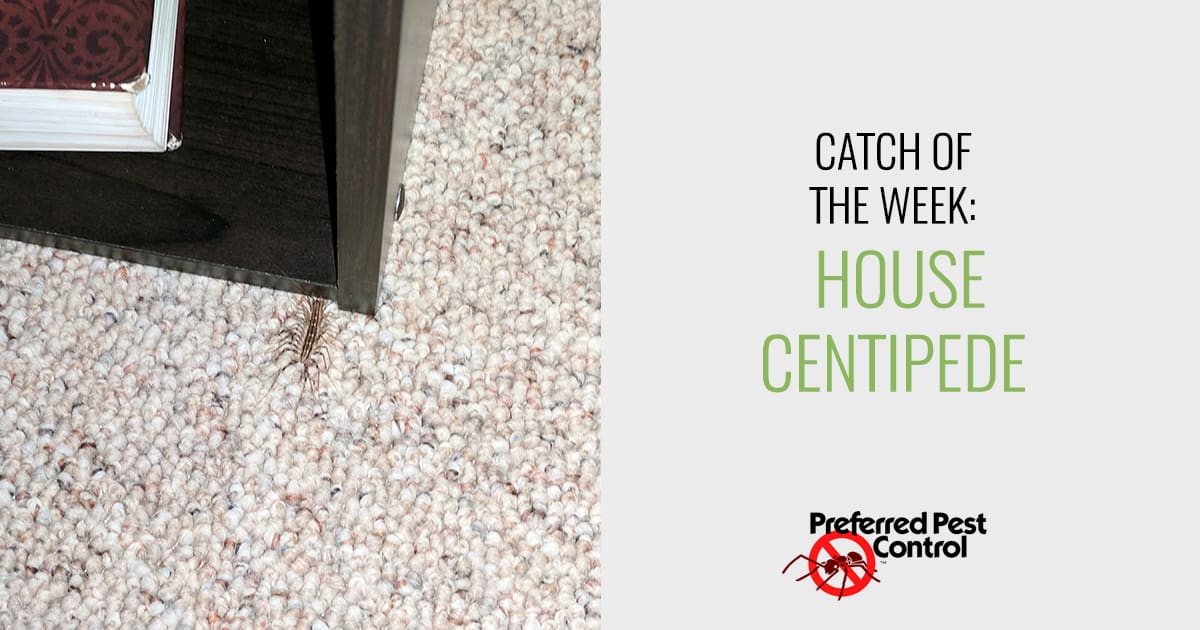
Catch of the Week: House Centipede
November 9, 2017
Preferred Pest exterminators are at it again! This week our pest control services brought us to Des Moines where we took care of a centipede problem. The homeowner was seeing these critters a little too frequently and called our trained professionals to get rid of the problem. We'll tell you a little bit more about centipedes and how to prevent them from invading your home.
What Is a Centipede?
The name "centipede" means "100 legs", however, despite the name, not all of these creepy crawlers have 100 legs or they could have anywhere between 15 to 177 pairs of legs along their thin and flat bodies. Centipedes have large claws or fangs that contain a venom they release to paralyze their prey. They typically eat worms, spiders, various small insects and sometimes other centipedes.
Centipedes are often mistaken for millipedes, but there are a few differences between these species. "Millipede" suggests that these critters have around 1,000 legs, which is much more than centipedes. They also have two sets of legs per body segment, compared to the centipede which has one pair for each section. Millipedes are also longer and have a rounder body compared to centipedes who have flatter abdomens.
Keep Centipedes Out of Your Home
Centipedes typically live outdoors in damp areas, under leaves, stones, boards, tree bark or in mulch around outdoor plants or landscaping. House centipedes can make their way inside homes during cold months through holes, cracks and small openings in the foundation or doorframes. Sometimes they crawl up through drains or sump pumps, and in some cases, they will travel inside through wood that is stored outdoors and brought inside to use in a fireplace.
Once inside, they are good at finding a dark and damp corner to hide in. They are most likely searching for a food source or a suitable environment to settle in. It can be hard to spot when these creepy crawlers invade your home since they are typically active at night, however, they are usually spotted in the nooks and crannies of bathrooms, closets and basements where they feed on other hidden insects.
The best precautions you can take to keep centipedes and other small bugs out is seal any cracks or holes in your exterior foundation or doorways into the house. It's important to inspect the outside of your house once or twice a year to keep all seasonal pests out. Always check wood that is stored outside before bringing it inside. Wood can house many different insect species inside its cracks and grooves. If these methods fail and you still find yourself with an infestation, call the professionals at Preferred Pest Control to take care of any pest problem on your hands.
Des Moines Metro's Best Pest Control
If you've noticed a surplus of centipedes around your home, Preferred Pest Control can help! Our pest professionals offer quality service with any pests around your home or business. Don't wait until you have a huge problem inside your house, schedule an appointment online or call Preferred Pest today at (515) 415-5550.